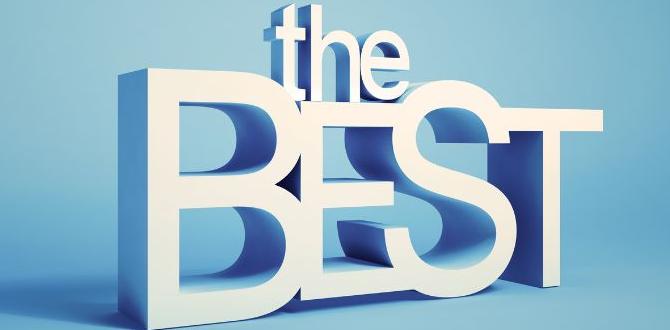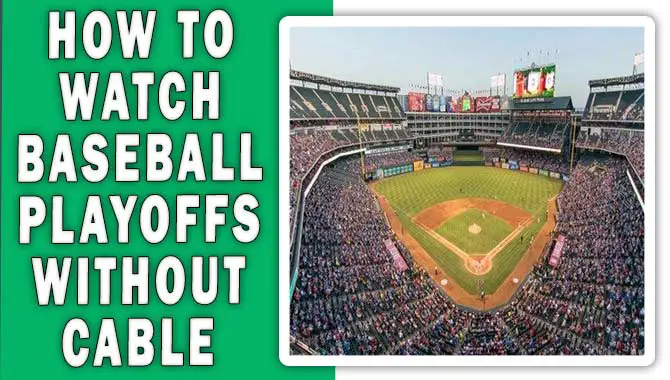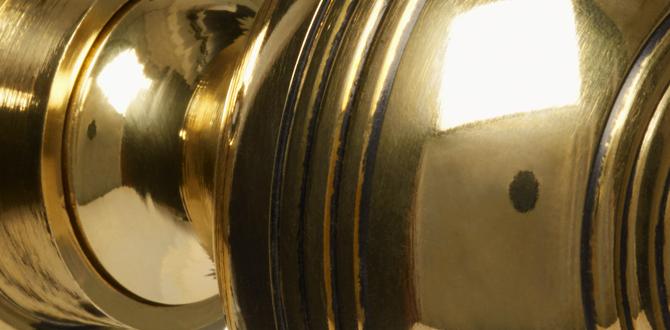The best catchers helmet for men provides crucial protection, a secure fit, and good visibility, ensuring a catcher can confidently block pitches and stay in the game. Choosing the right one involves understanding key features like padding, fit adjustment, and shell durability.
Stepping behind home plate as a catcher is one of the most demanding and rewarding positions in baseball. You’re the field general, the defensive leader, and the last line of defense. But with great responsibility comes great risk. The sharp sting of a foul tip, the impact of a wild pitch, or even a collision at home plate are all part of the job. Keeping your head safe is non-negotiable. That’s where a top-notch catchers helmet for men comes in. It’s not just gear; it’s your protector. Many players, especially those new to the position, might feel a bit overwhelmed by all the options. Don’t worry! We’re here to break down exactly what makes a great catchers helmet and how to find the perfect one for you. Let’s get you ready to block anything that comes your way!
Why Every Catcher Needs a Quality Helmet
A catcher’s helmet is arguably the most critical piece of equipment for any player in that position. Its primary job is to absorb the impact of errant pitches, foul balls, and collisions, protecting the player’s head and face from serious injury. Beyond safety, a well-designed helmet offers comfort, improved visibility, and a secure fit that won’t shift during crucial plays. Think of it as your personal safety shield on the diamond. Without it, you’re leaving yourself unnecessarily exposed to avoidable harm.
The Anatomy of a Catcher’s Helmet
Understanding the different parts of a catcher’s helmet will help you make a more informed decision. Here’s a quick breakdown:
- Outer Shell: This is the hard, protective outer layer, usually made from durable plastic like ABS or polycarbonate. It’s designed to deflect and absorb the initial impact of a ball or bat.
- Padding: Inside the shell, you’ll find various layers of foam padding. This is crucial for cushioning the blow and absorbing shock. Look for high-density foam that offers both protection and comfort without being too bulky.
- Jaw Guard (Throat Protector): Most modern helmets include an extended chin and jaw guard. This piece is vital for protecting your lower face, especially from foul tips that might slide under the mask.
- Inner Liner/Harness: This is the system that holds the helmet securely to your head. Adjustable straps and internal harnesses ensure a snug fit, which is essential for the helmet to do its job effectively.
- Mask (if applicable): Some helmets are designed as one integrated unit, while others are a helmet with a separate, attachable mask. The mask protects the face, particularly the eyes and nose.
Key Features to Look For in a Catcher’s Helmet for Men
When you’re shopping for a catchers helmet for men, several factors will make a big difference in performance and protection. Let’s dive into what truly matters:
1. Protection and Safety Standards
This is paramount. Look for helmets that meet safety standards. In baseball, the primary recognized standard is established by SEI (Sporting Goods Manufacturers Association) and often certified by organizations like NOCSAE (National Operating Committee on Standards for Athletic Equipment). These certifications mean the helmet has undergone rigorous testing to ensure it can withstand impacts. A helmet that doesn’t meet these standards might not offer adequate protection. Always check product descriptions or labels for these certifications. For more on athletic equipment safety, resources like the Consumer Product Safety Commission offer valuable insights into why safety standards are critical.
2. Fit and Adjustability
A helmet that doesn’t fit properly is almost as bad as no helmet at all. It needs to be snug but not painfully tight. A loose helmet can shift during plays, obstructing your vision or, worse, not protecting the intended areas. Most adult catchers helmets for men feature adjustable systems, often using a dial or harness system in the back. This allows you to fine-tune the fit for your specific head circumference. A secure fit means the helmet stays put, even during hard impacts or quick movements.
3. Comfort and Ventilation
You’ll be wearing this helmet for extended periods, often in hot weather. Comfort is key to staying focused. Look for helmets with ample, high-quality padding that feels good against your skin. Good ventilation is also crucial. Helmets with strategic vents help air circulate, keeping your head cooler and reducing sweat buildup. Less sweat means better focus and less discomfort as the game wears on.
4. Visibility and Field of Vision
As a catcher, your peripheral vision is vital for calling pitches, framing them correctly, and making plays around the plate. A good helmet shouldn’t obstruct your view. The mask design, if separate, plays a significant role here. Look for a mask with a strong, clear view of the field. Some helmets offer wider openings or a lower profile, allowing for better sightlines.
5. Durability and Material
Baseball is a tough sport, and your gear needs to hold up. Look for helmets made from robust materials. High-impact ABS plastic or polycarbonate shells are standard for good reason – they are tough and resistant to cracking and damage. The padding should also be durable, able to withstand repeated impacts without breaking down quickly. A well-made helmet will last for multiple seasons.
Types of Catchers Helmets
While the core function remains the same, catchers helmets for men can come in a few different styles. Understanding these will help narrow down your choices:
Integrated Helmets
These helmets have the mask built directly into the helmet structure, forming a single unit. They often offer a very secure feel because the mask and helmet are one piece. They tend to be sleeker and can sometimes offer a more streamlined profile.
Helmet with Detachable Mask
This setup involves a helmet and a separate cage-like mask that attaches securely to it. The advantage here is that you can sometimes choose a helmet and mask combination that best suits your needs, or replace just the mask if it gets damaged. The fit and stability of the attachment are critical for this type.
“Hockey-Style” Helmets vs. Traditional
You might also notice helmets that resemble hockey helmets. These typically offer a rounder, more helmet-like shell with a cage that attaches. Traditional baseball catchers helmets might have a slightly different shell shape and a mask that wraps around more of the face. Both styles can be effective, so it often comes down to personal preference and fit.
Choosing the Right Size and Fit
Getting the size and fit correct is essential for safety and comfort. Here’s how to do it:
Measure Your Head
Before you even start looking, grab a flexible tape measure. Wrap it around your head about one inch above your eyebrows and ears, where the helmet will sit. Note the measurement in both inches and centimeters. This is your head circumference. Most manufacturers provide sizing charts based on these measurements.
Try Before You Buy (If Possible)
The best way to ensure a good fit is to try the helmet on. When you put it on:
- It should feel snug all around your head.
- There should be no excessive pressure points, but it shouldn’t feel loose either.
- When you shake your head side to side or nod, the helmet should stay in place.
- The jaw guard should comfortably cover your chin and lower jaw.
- Your vision should not be significantly impaired.
Understanding Adjustable Systems
Most modern catchers helmets for men use an adjustable harness system. These are great because they allow for a customized fit. Look for systems that are easy to use, even with batting gloves on if you plan to adjust it during a game.
Top Gear Brands and Popular Models (General Overview)
While specific model recommendations can change rapidly with new releases, some brands consistently produce high-quality catchers gear. Researching these brands and their latest offerings is a good starting point. Always check recent reviews for real-world performance and durability.
Some of the well-regarded brands in the catcher’s gear market include:
- All-Star: Known for their innovative designs and excellent protection, particularly their Series helmets like the MVP2400 and MVP2500.
- Wilson: A powerhouse in baseball equipment, Wilson offers reliable and durable catcher’s helmets that are popular at all levels.
- Easton: Easton consistently provides gear that balances protection, comfort, and affordability.
- Mizuno: Mizuno is recognized for its quality craftsmanship and comfort-oriented designs.
- Rawlings: A historic name in baseball, Rawlings offers solid, dependable catcher’s helmets.
When looking at specific models, pay attention to the materials used, the padding density, and the specific fit adjustment mechanisms. Features like antimicrobial liners can also add to comfort and hygiene.
Maintaining Your Catcher’s Helmet for Longevity
Proper care will extend the life of your catchers helmet for men and ensure it continues to provide optimal protection. Here are some simple maintenance tips:
- Cleaning: Wipe down the exterior with a damp cloth after games or practices, especially if it gets dirty. For the interior padding, use a mild soap and water solution, or specialized helmet cleaners, and allow it to air dry completely. Never submerge the helmet in water.
- Drying: After cleaning or if it gets wet from sweat, let the helmet air dry thoroughly. Avoid leaving it in direct sunlight for prolonged periods, as this can degrade the plastic and padding.
- Storage: Store your helmet in a cool, dry place. A helmet bag is ideal to protect it from scratches and impacts when not in use. Avoid storing it under heavy equipment, which could crush or deform it.
- Inspect Regularly: Periodically check the helmet for any signs of damage, such as cracks in the shell, worn-out padding, or loose straps. If you notice significant wear or damage, it’s time to consider a replacement.
When to Replace Your Catchers Helmet
Even with the best care, catchers helmets for men don’t last forever. Replacement is sometimes necessary for safety. Here are key indicators:
- Visible Damage: Cracks, deep gouges, or deformation of the shell mean its protective integrity may be compromised.
- Degraded Padding: If the padding is flattened, torn, or no longer provides a comfortable, cushioning feel, it’s not absorbing impact effectively.
- Loose or Damaged Harness: If the internal harness or adjustment system is broken or can no longer provide a secure fit, the helmet is unsafe.
- Outdated Safety Standards: While less common for a helmet that’s not visibly damaged, if you’re using a very old helmet and there have been significant advancements in safety standards and technology, you might consider an upgrade.
- After a Major Impact: Even if there’s no visible damage, a helmet that has sustained a significant impact (e.g., a very hard foul ball directly to the mask, or a collision) might have internal damage that isn’t apparent. For maximum safety, it’s often recommended to replace a helmet after a major impact.
Training Drills to Enhance Catcher Performance
A great helmet is essential, but so is skill. Practicing key catcher techniques will make you more confident and effective. Here are a few fundamental drills:
1. Receiving Drills
The Goal: To improve your ability to catch pitches cleanly and frame them effectively.
- Stationary Receiving: Have a pitcher throw from a short distance. Focus on receiving the ball cleanly in the pocket of your glove, keeping it in front of your body, and making sure your glove is available for the umpire.
- Blocking Willingness: Practice dropping to your knees and presenting your chest protector and glove to block pitches in the dirt. Focus on staying low and controlling the rebound.
- Wild Pitch Recovery: Simulate a wild pitch bouncing off your chest protector. Practice quickly locating the ball, scooping it up, and making a throw to the appropriate base.
2. Throwing Drills
The Goal: To develop a strong, accurate arm for throwing out runners.
- Pop-up and Throw: Practice fielding pop-ups and immediately transitioning into a strong throwing motion.
- In-a-Row Throws: From a crouched position, practice snapping the ball out of your glove and making quick, accurate throws to various bases. Focus on footwork and transferring power.
- Double Play Feeds: Practice receiving a ground ball and making a quick, clean feed to a middle infielder to start a double play.
3. Game Situation Drills
The Goal: To simulate game-like scenarios and improve decision-making.
- Bunt Coverage: Practice anticipating bunts, charging forward, fielding the ball cleanly, and making the throw to first base.
- Tag Plays at Home: Work on receiving a throw from an infielder and applying the tag to a runner sliding into home plate.
- Pitch Calling Practice: Work with your pitcher on calling pitches based on the game situation, batter’s tendencies, and your strengths.
Frequently Asked Questions about Catchers Helmets
Q1: How tight should a catchers helmet be?
A catchers helmet should be snug but comfortable. It shouldn’t move when you shake your head, but it also shouldn’t cause pain or pressure points. A proper fit ensures it stays in place during impacts and provides optimal protection.
Q2: Can I wear a batting helmet instead of a catcher’s helmet?
No, a standard batting helmet will not provide adequate protection for a catcher. Catcher’s helmets are designed with different padding, a cage or mask, and a more robust shell to withstand direct impacts from pitched balls, foul tips, and collisions.
Q3: What’s the difference between a youth and an adult catcher’s helmet?
The primary differences are size and weight. Adult catchers helmets for men are designed for larger heads and are typically more robust. Youth helmets are scaled down in size and weight to fit younger players comfortably and safely.
Q4: How often should I clean my catcher’s helmet?
It’s best to wipe down the exterior and interior padding after each use, especially if you sweat a lot. For a more thorough cleaning, use mild soap and water, and allow it to air dry completely. Regular cleaning helps maintain hygiene and can prevent material degradation.
Q5: Do catchers helmets come with chest protectors and leg guards?
Typically, catchers helmets are sold as individual pieces. Chest protectors and leg guards are usually sold separately, although many brands offer complete catcher’s gear sets that include all three items.
Q6: Can I use my catcher’s helmet for other sports?
No, a catcher’s helmet is specifically designed for baseball. Its protective features are calibrated for baseball impacts. Using it for other sports like hockey, lacrosse, or football could be ineffective and dangerous, as those sports have different types of impacts and require specialized protective gear.
Comparing Popular Catchers Helmet Models: A Quick Look
To give you an idea of what’s out there, here’s a simplified look at some common features you might find in different models. Prices can vary widely based on brand, features, and season.




